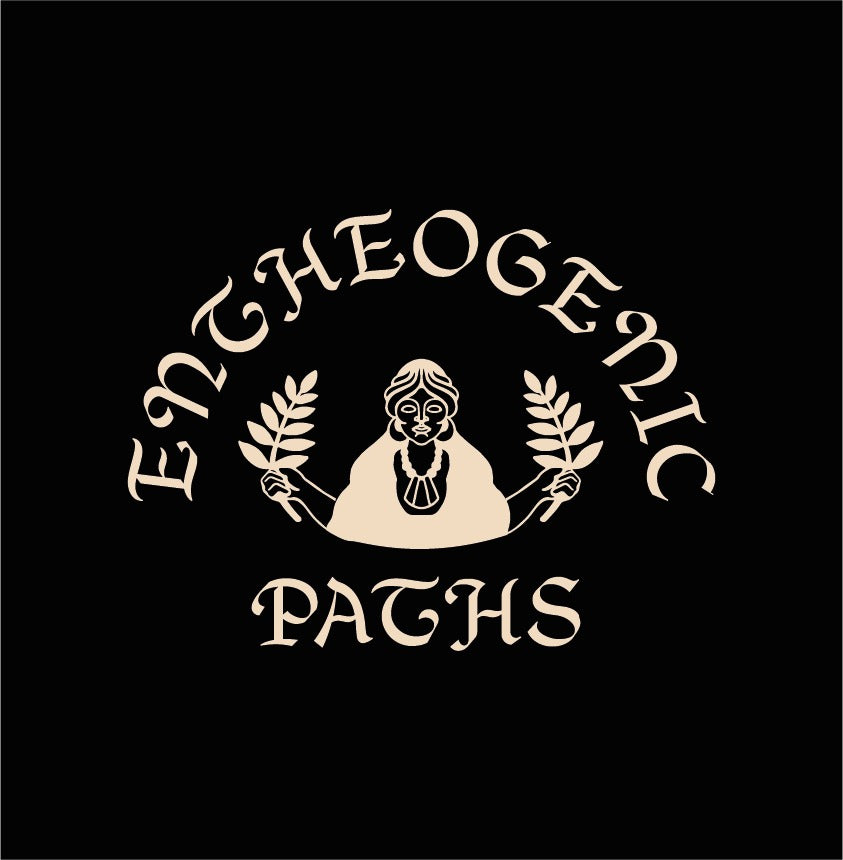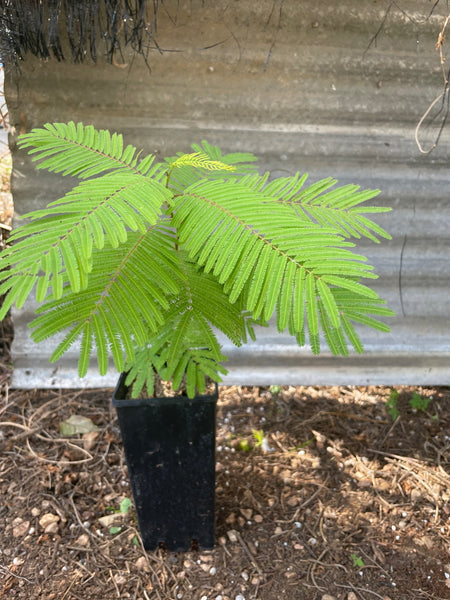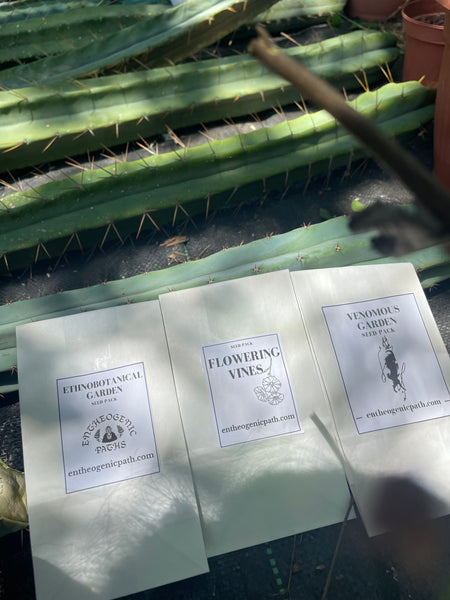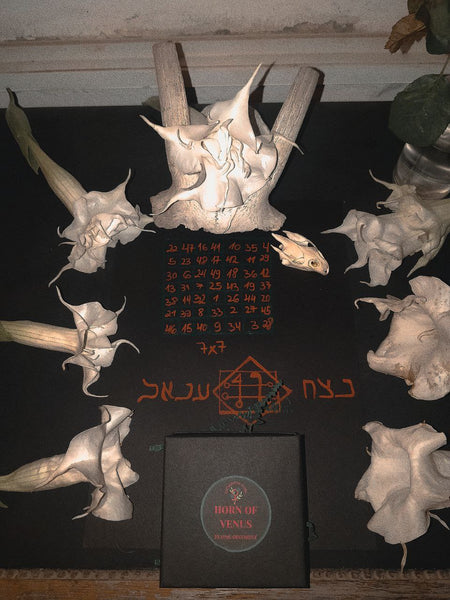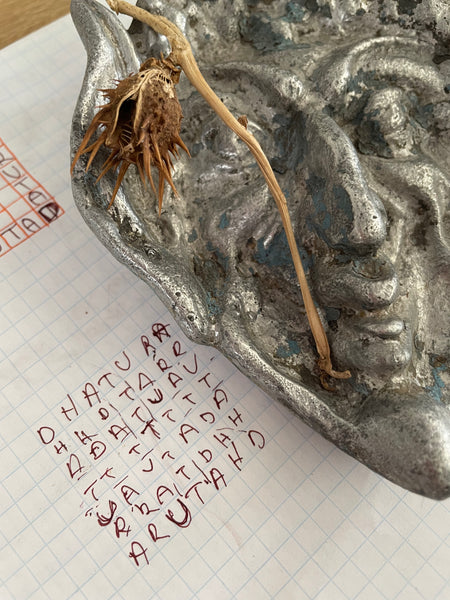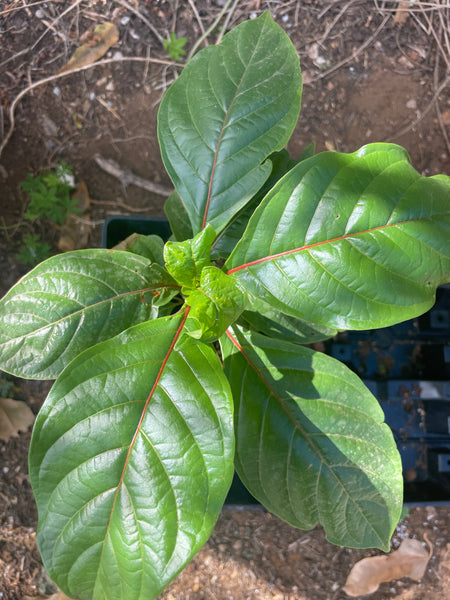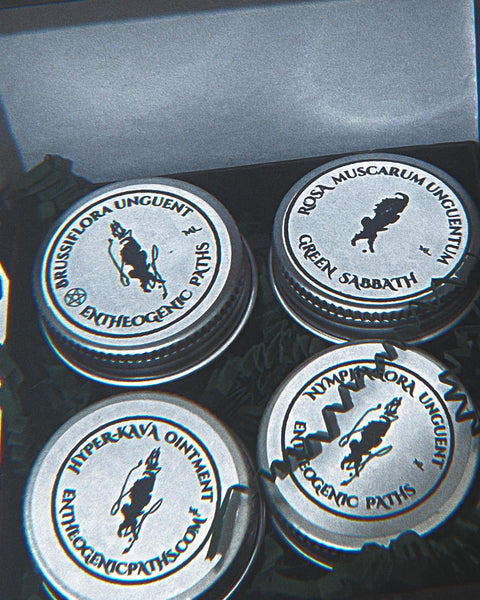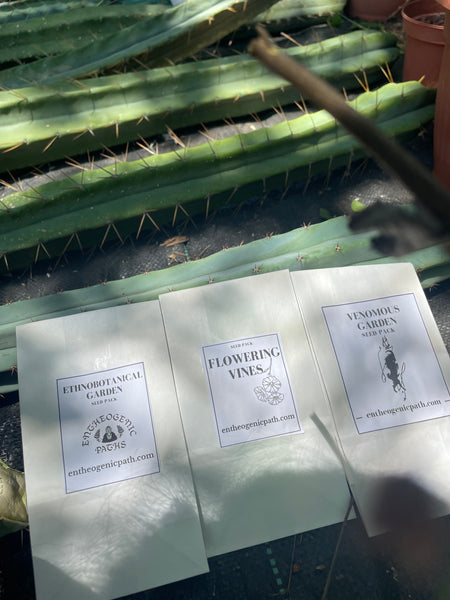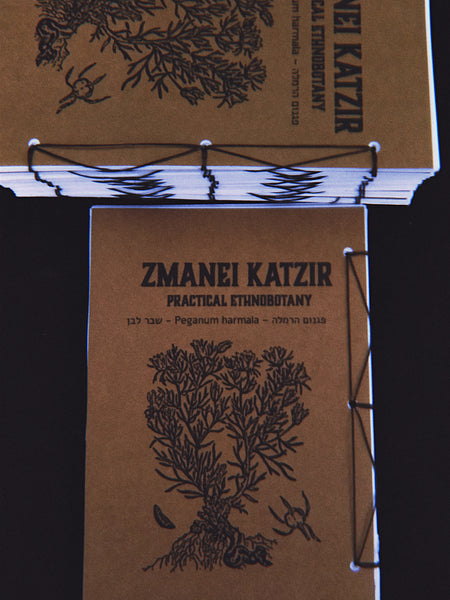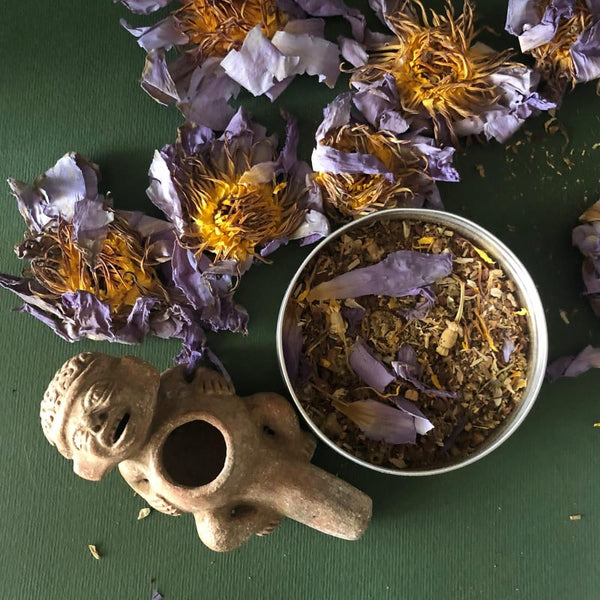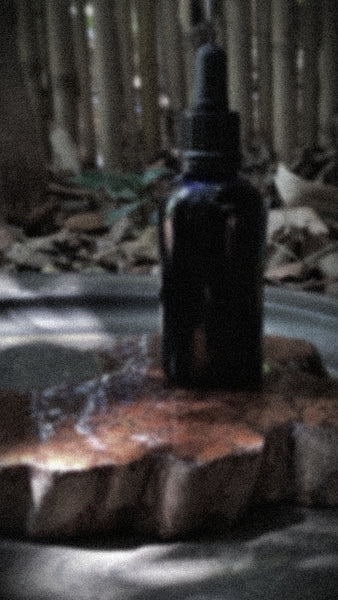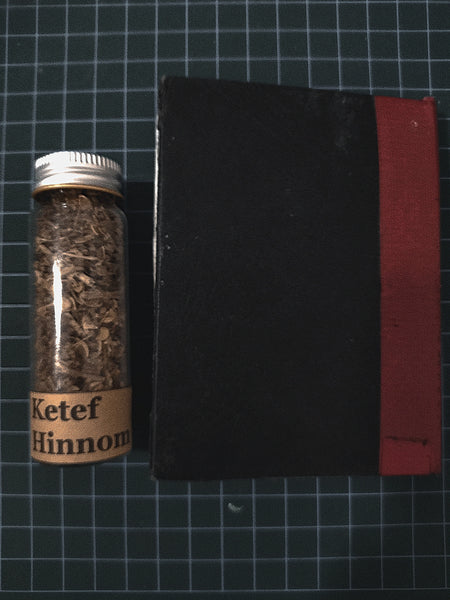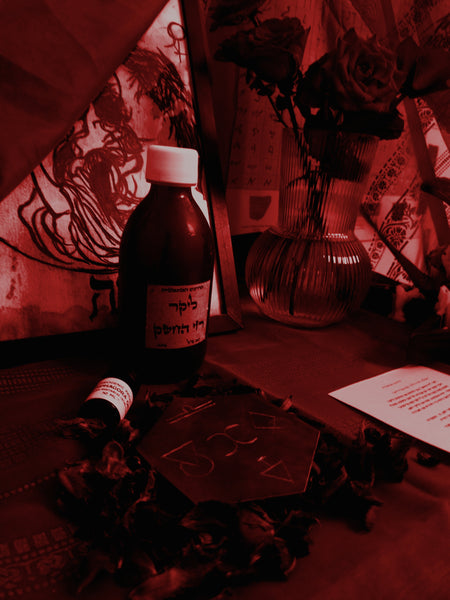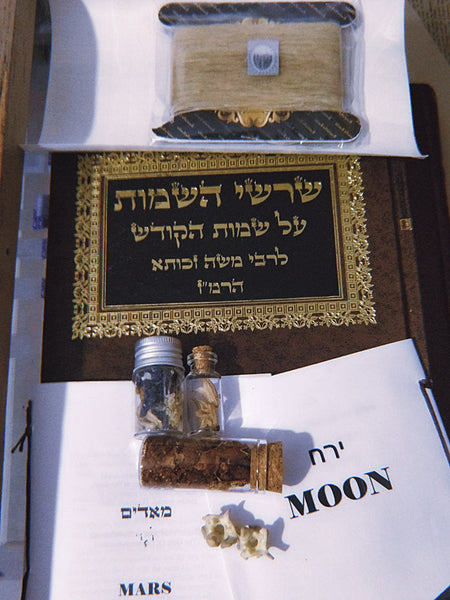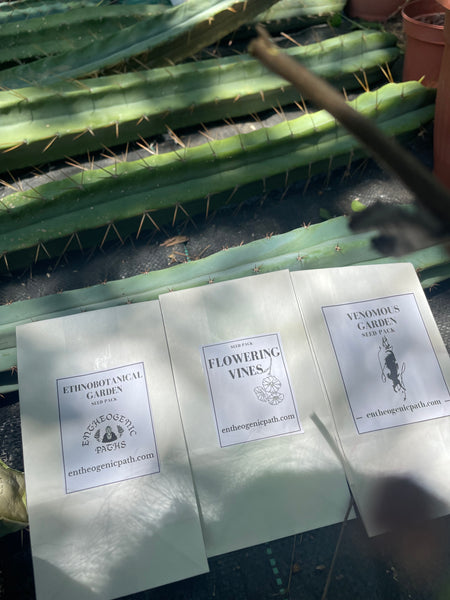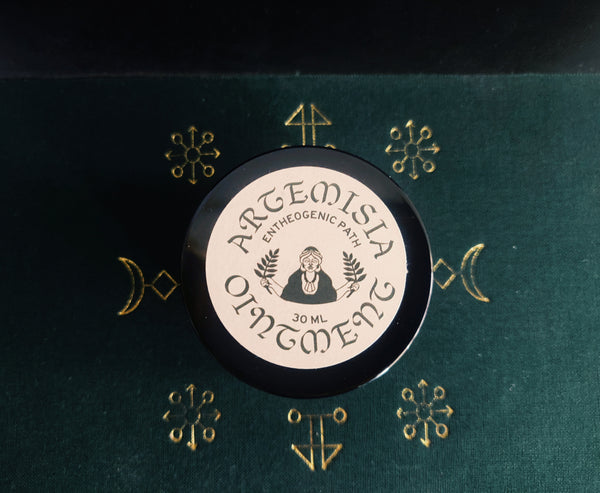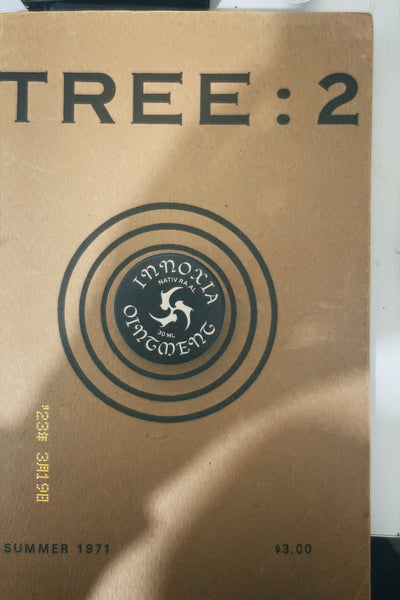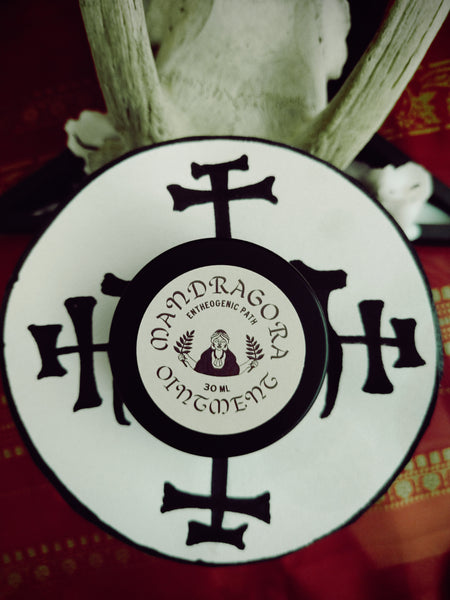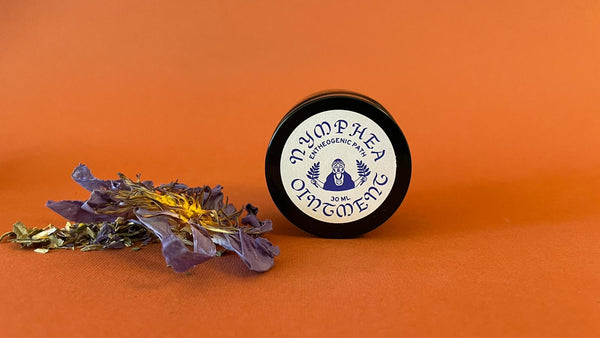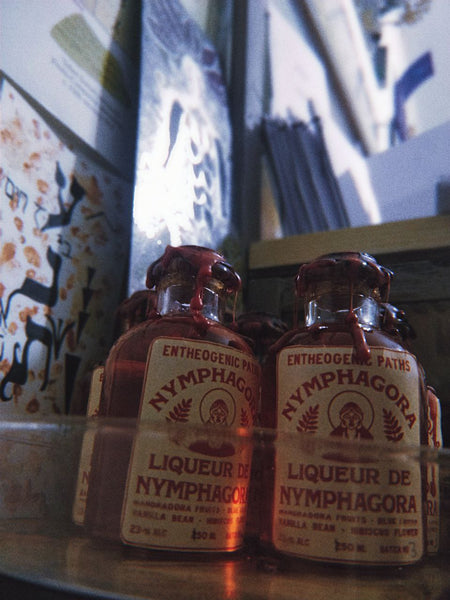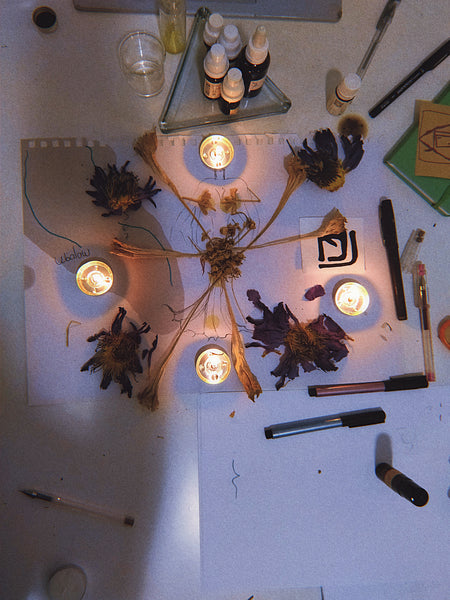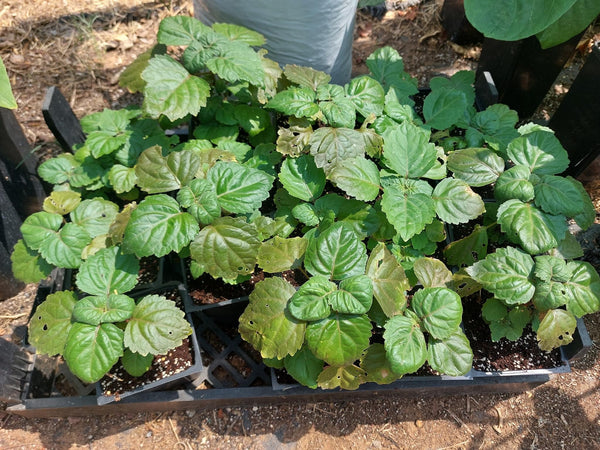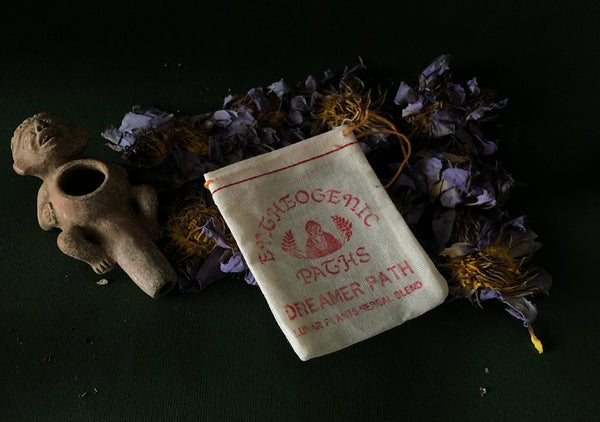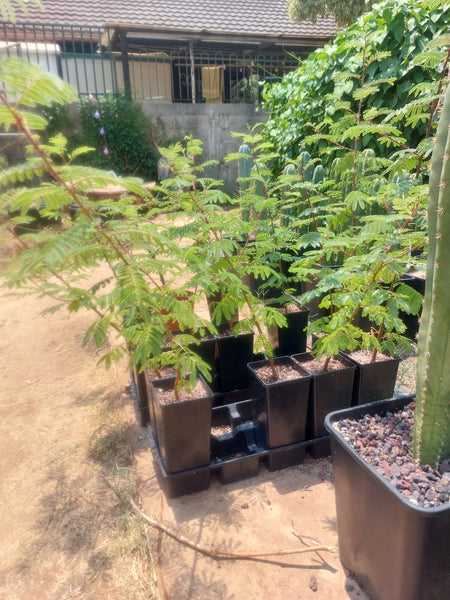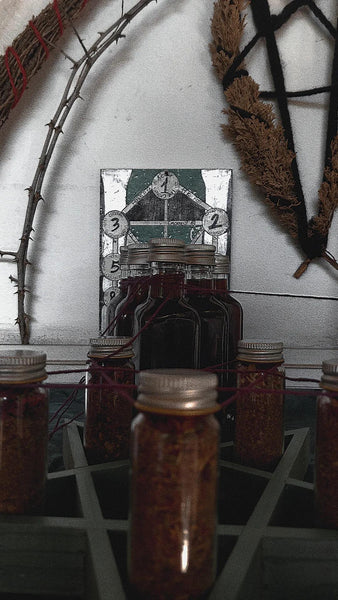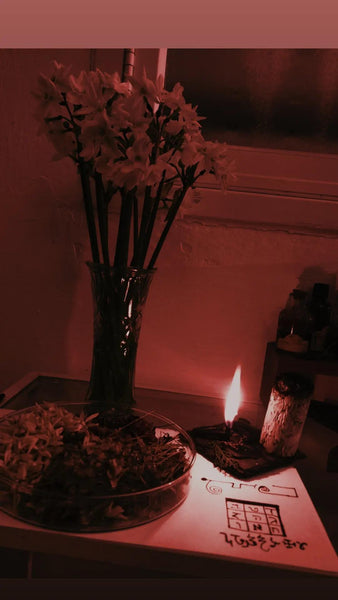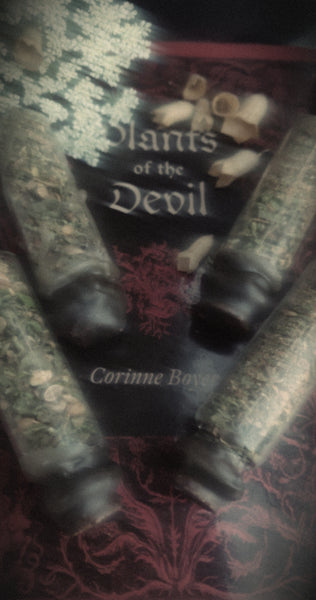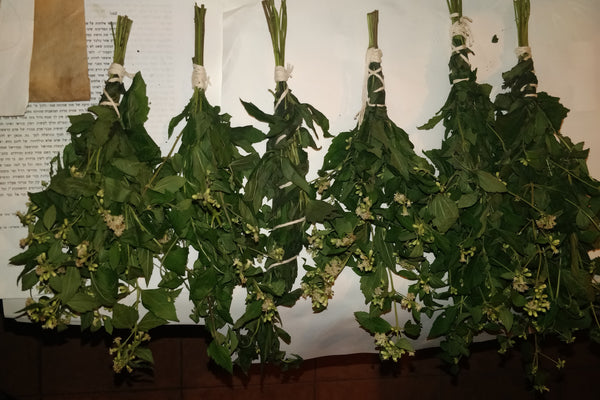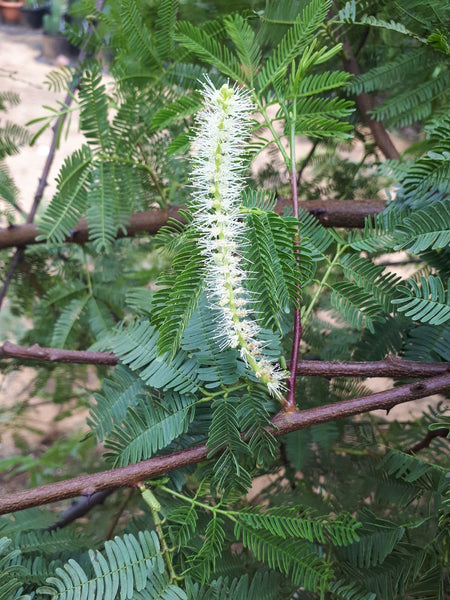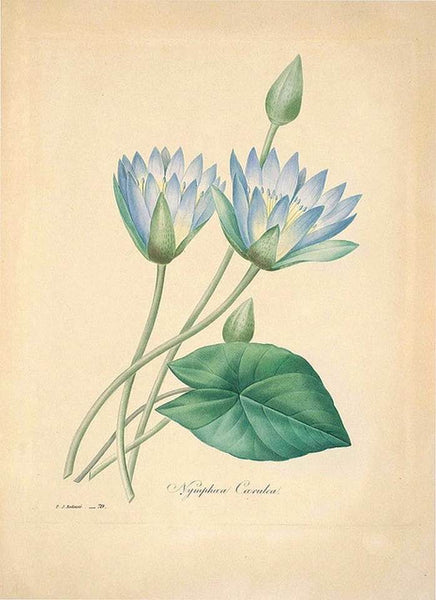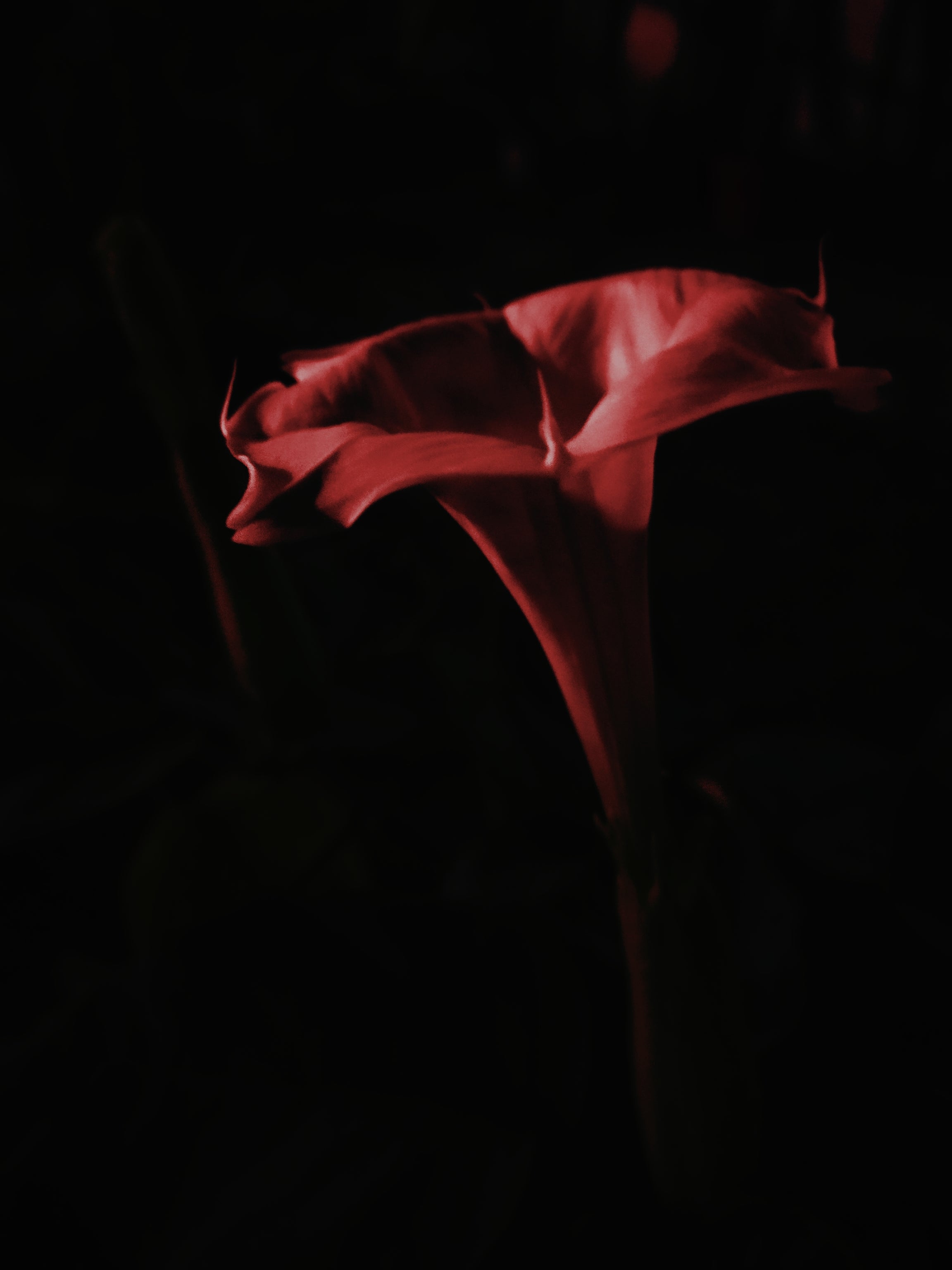
Datura and Grandmother Spider.
Posted by entheogenic paths on
This week I hosted a dear woman from the north for a meeting that focused on the cycles of the moon and plants that can suit each phase. We were conflicted about meeting on this date, the seventh of October because of the heavy atmosphere that was felt in the air, but our hearts pulled us to surrender to the moment and make a deep connection with the plants and the lunar principles.
.
We found a common connection around the figure of the spider - with eight legs and eight eyes, which is an ancient symbol of female power and the ability to spin words and life in its special web. Just like belladonna in her own right but also like the mesmerizing smell of datura that went hand in hand with our conversation, smiling at us from the garden and reminding us that like the spider woman, datura also speaks of different forms of devotion to enchanted art.
.
There is the obsessive devotion to creation, which Datura the spider holds in her almost mesmerizing web, and there is the maternal and grandmotherly aspect that they both embody. Each of them, in their unique work, provide wisdom and support. They are faithful guides and help us move through our personal shadows while weaving our story in a rich tissue of myth and reality.

Datura spider I made for a class on death as part of an archetypal art workshop.
/
Today I am drawn to create a new mythology around Datura, a fusion of everything I have learned about or through her.
we can look at her through the archetype of the spider woman - a strong female character who weaves wisdom and creativity. Like datura, with its dark green foliage and white trumpet shaped flowers that appear in disturbed areas, similar to how a spider spins its web in neglected areas.
.
History is full of cultures that passed down their stories, and thus the figures of the spider and the datura became an integral part of our collective consciousness. They represent wisdom and attention to the subtle networks that connect all things.
I focus on mythologies and folktales from cultures that used Datura but did not necessarily connect it with the spider.
.
Like the coyote, one of the totems of the datura plant and the goddesses momoy in Native American stories, the spider is seen as a trickster in West Africa. There he was called Anansi. He is a deity whose creation is often attributed to knowledge or storytelling. His stories reached Jamaica and the Caribbean through the slave trade and are part of a vibrant oral culture. African countries still publish Anansi stories nowadays. Part of the oral culture of the Ashanti, assimilated the word - Anansesem - "spider stories" into their language. This in turn fed the Anansi toree, those stories brought from Africa and told to Maroon children and other Africans in the diaspora.

Illustration of Anansi by Pamela Coleman Smith, 1899
(I added in the sources a link to a collection of Anansi stories by Pamela Coleman Smith)
.
In Japanese mythology, Jorōgumo , a type of yokai, a spider that appears as a symbol of desire and sex, succeeds in becoming a conquering woman, seducing samurai and carrying a duty of power and secret and echoing the archetype of the Black Widow which I will write about in a separate blog soon.
.

(Jorōgumo from Gazu Hyakki Yagyō by Toriyama Sekien)
The spider woman plays an important role in Navajo mythology, where she is seen as a helper and guide in the transitions of life. Elsewhere, she is seen as a being who can instill fear, but internally she embodies the power and wisdom of transitioning between states. Just like the changing goddess.
One of the fascinating legends comes from the American Southwest, among the Hopi tribe, where the figure of the spider is recognized as a wise grandmother who wove the world into existence.
In these stories she teaches the people to weave threads and embroider fabrics and gives them the spider's ability to create webs.
In the creation story of the Navajo tribe, people travel through four lesser worlds, creating chaos and disorder until they are expelled from each in turn. In one world, they are threatened by a devastating flood, but Spider-Woman saves them by weaving a web that allows them to move to safety.

A pre-Columbian spider image from a shell at Tel Spiro, Oklahoma
Spider Woman and the Birth of the Snake Clan:
This passage comes from the Hopi Snake Myth, recorded around 1900, about a young man traveling to the home of the Snake People. There, with the help of the spider woman, he meets a beautiful snake maiden.
On the walls of the kiva (a room used by the ancient Pueblos for political meetings and religious ceremonies) hung many costumes made of snake skins. Soon the commander said to the people: "Let's get dressed now", and turning to the young man, asking him to turn around so he wouldn't see what was happening. The young man did so, and when he looked back again, the men had all dressed up in snake costumes and turned into snakes, big and small, bull snakes, riding snakes and rattlesnakes, moving about the floor crawling and rattling.
As he turned around and the snake men dressed themselves, the spider woman whispered to him that they were now going to test him, but he should not be afraid to touch the snakes, and she gave him many instructions...
The spider woman whispered to the young man, that the snake who was acting very angry was actually the beautiful maiden and that he should try to take this one. He tried, but the snake was very wild.
"Don't be afraid", whispered the spider woman... The man immediately grabbed the snake, held it and caressed it upwards four times, each time spraying a little medicine on it, thus freeing it from its anger. The snake then changed back into a beautiful maiden.
The two later marry, and their children become the ancestors of the Snake Clan.

The ancient Mocha people of Peru depict spiders in their art, such as this ceramic from the Larco Museum, dating from about 300 AD.
.
In the Philippines, I found a folk tale that deals with the hatred between the spider and the fly, which tells us about the natural forces of connection and separation between the sexes (added a link at the end to the collection of stories).
.
.
.
Now imagine for a moment a multi-dimensional spider webs in the early morning, covered with dew drops.
Each dewdrop contains the reflection of all the other dewdrops, and within each of these reflections are the reflections of all the other dewdrops - ad infinitum.
This is how Alan Watts describes the Buddhist view of the universe in a simple and beautiful image.

Maman (1999), a bronze, stainless steel and marble sculpture by the artist Louise Bourgeois, was placed in several places around the world. This is another link I found between Datura and spiders. The title is the familiar French word for "mother", and the name of the goddess of Datura called Momoy and described as mother or grandmother.
/
In Vedic philosophy, the spider is considered a force that hides the ultimate reality through the veils of illusion, while 'Indra's web' is used as a metaphor for the concept of mutual penetration, the concept that connects all phenomena, all events and essences in the universe. In this network, at each vertex there is a multicolored jewel, each of which perfectly reflects all the other jewels in the network. Everything that exists is related to everything else, and reflects it accurately and in infinite layers.
As historian Timothy Brock wrote in Vermeer's Hat, when Indra fashioned the world as a web, he wove a pearl in every knot, and each pearl is not only related to the other, but reflects every other pearl in an endless circle of existence and sophistication. In this network, every idea and every truth is an integral part of the whole... I think we've got the point.
.
.
.
From the Indian culture came the name Datura, a sacred plant associated with the god Shiva. I have often imagined the datura flower, a ghost flower, combined with the dancing figure of Shiva Nataraja. I spent many hours staring at ancient bronzes of Shiva, mostly trying to see if the datura-like trumpet flower was actually incorporated into his magnificent headdress. The most impressive example I have come across is the magnificent statue from Thiruvalangadu, from the 11th century, in which the dancing Shiva wears a three-tiered trumpet flower on his head, alongside a skull, a cobra, and a crescent moon.

(Some varieties of D. metel have double and triple flowers. Photo by Flickr user Badri Seshadri, taken at the Chennai Museum.)
Exuding mystery, ghosts and passion, this moon flower is deeply connected to the great myths, snakes, coyotes, the crescent moon, the cosmic dance of reality and for me, spiders too. when I look at the enigmatic smile of Shiva Nataraja, I realize how little we understand these forces of the universe, and we may never be able to fully understand them.
Probably only the dancing god himself, who took the dangerous moon flower under his wings, would know its eternal secrets.

Share this post
- 0 comment
- Tags: אפריקה, דטורה, צמחי רעל, רוחות הצמחים
